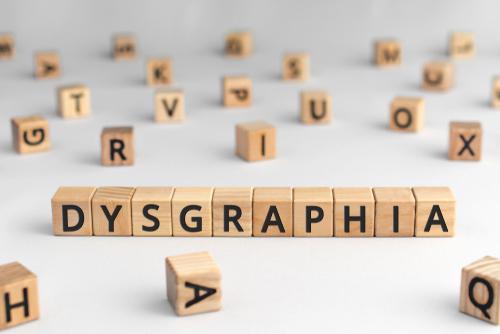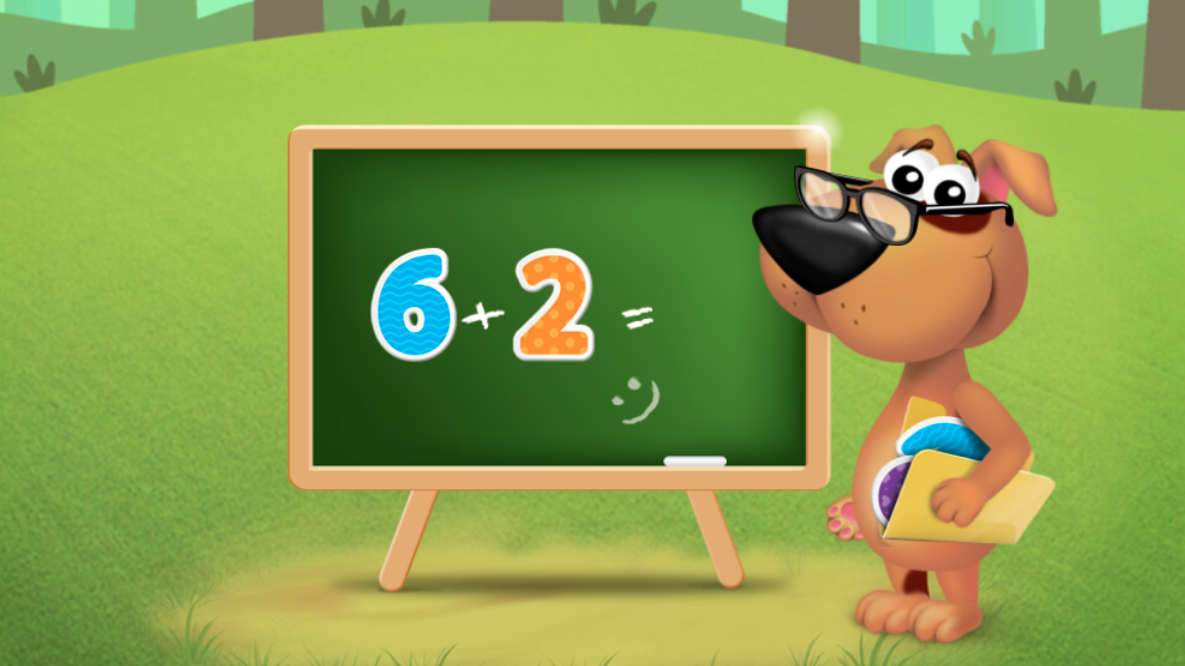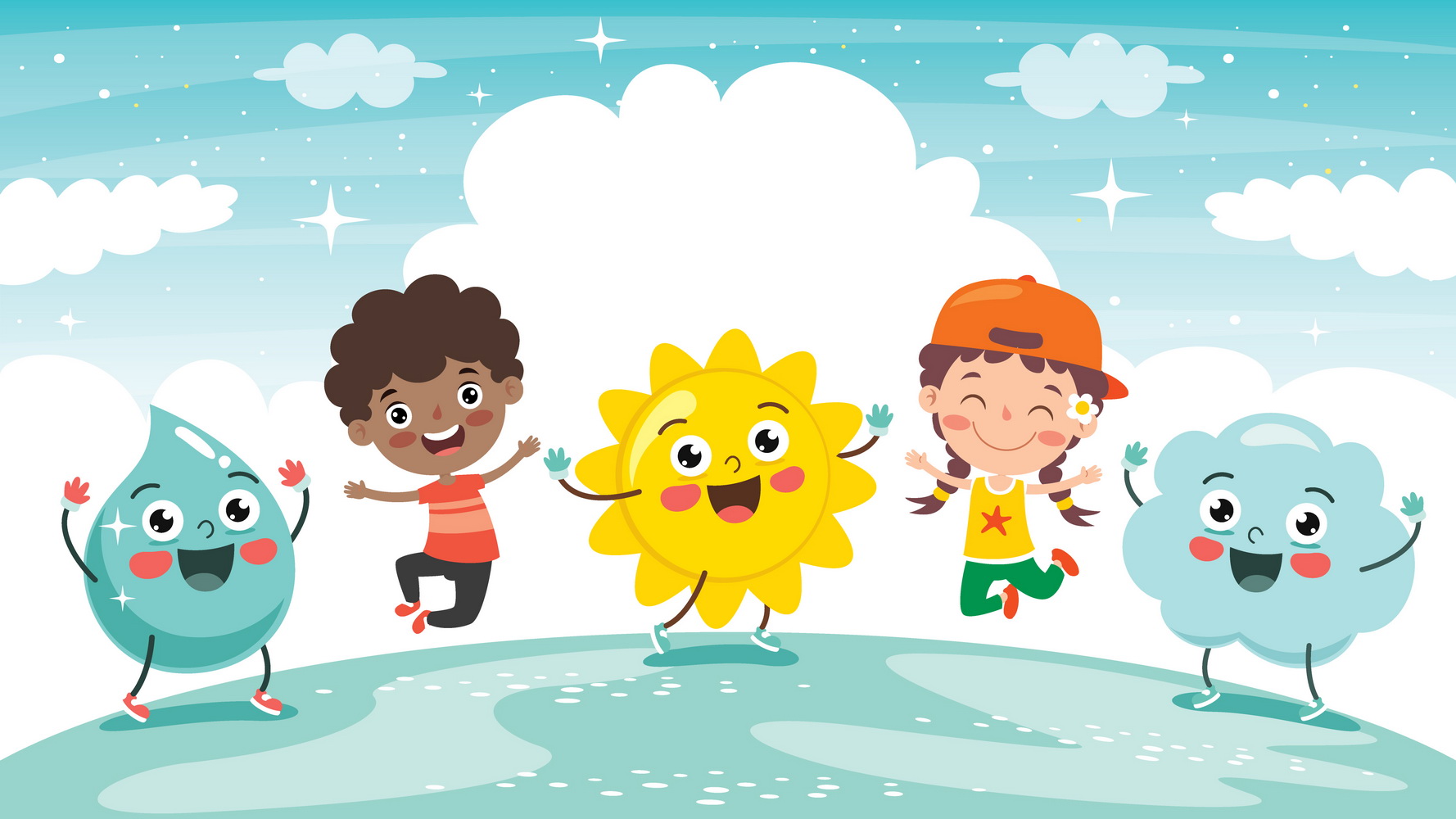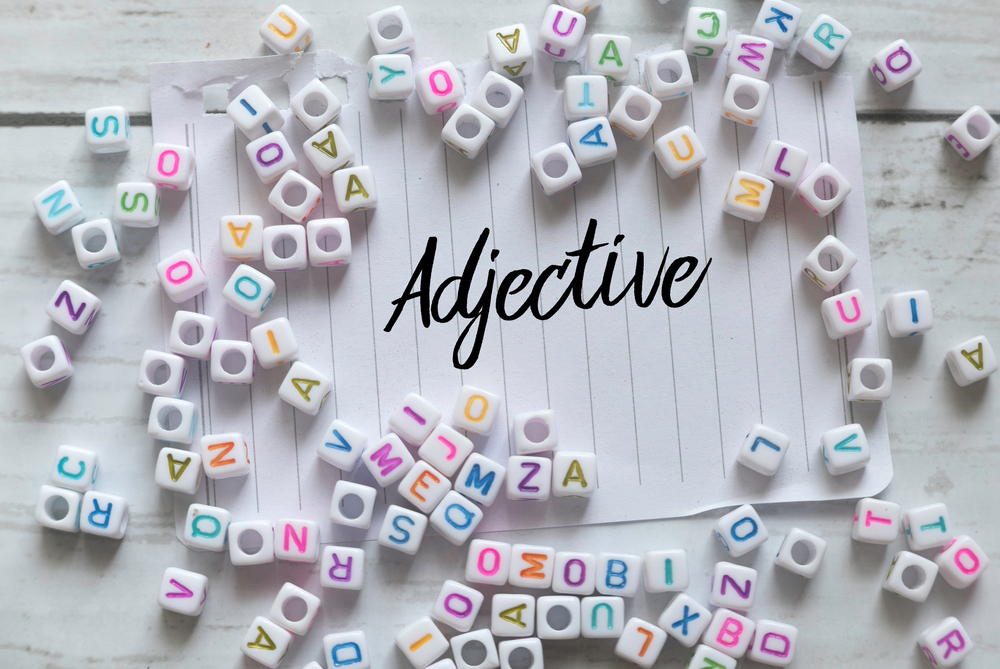Normal Songs and Poems Worksheets Activities With Answers for Ages 4-9
11 filtered results
-
From - To
Explore our engaging collection of Normal Songs and Poems Worksheets designed specifically for children ages 4 to 9! These fun and interactive activities encourage creativity, language development, and a love for learning through music and rhyme. Each worksheet features original songs and poems, accompanied by easy-to-follow activities that reinforce key concepts and skills. Perfect for classrooms or homeschooling, our worksheets make learning enjoyable and effective. Plus, we provide answer keys for educators and parents to quickly assess understanding. Download our free resources today and inspire your young learners to sing, dance, and express themselves through the magic of song and poetry!
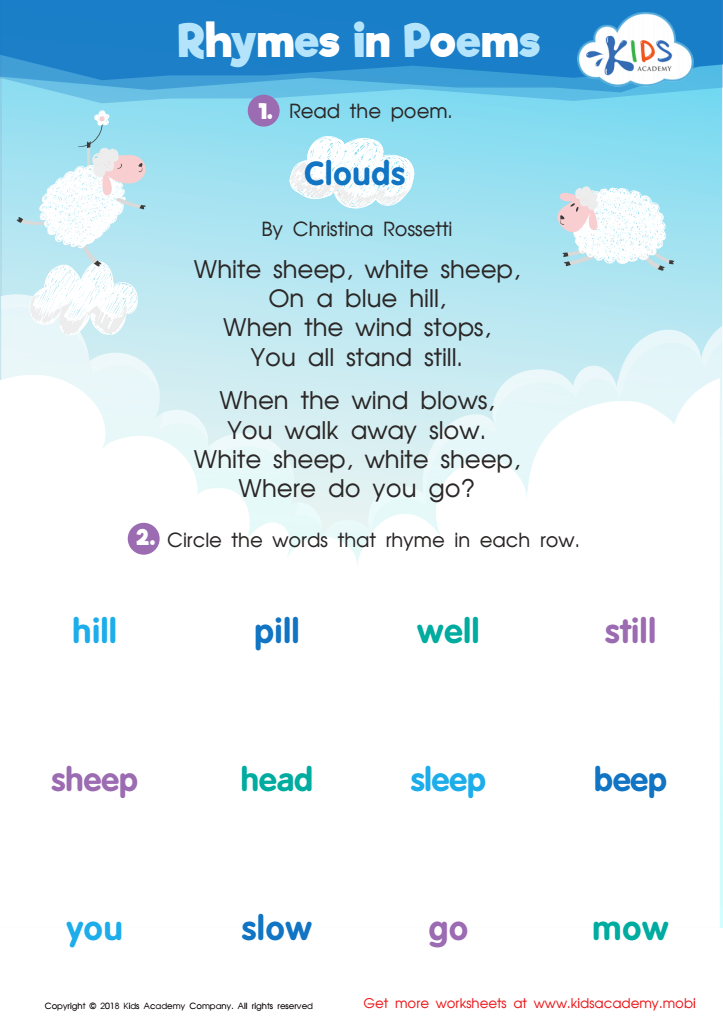

Rhymes in Poems Worksheet
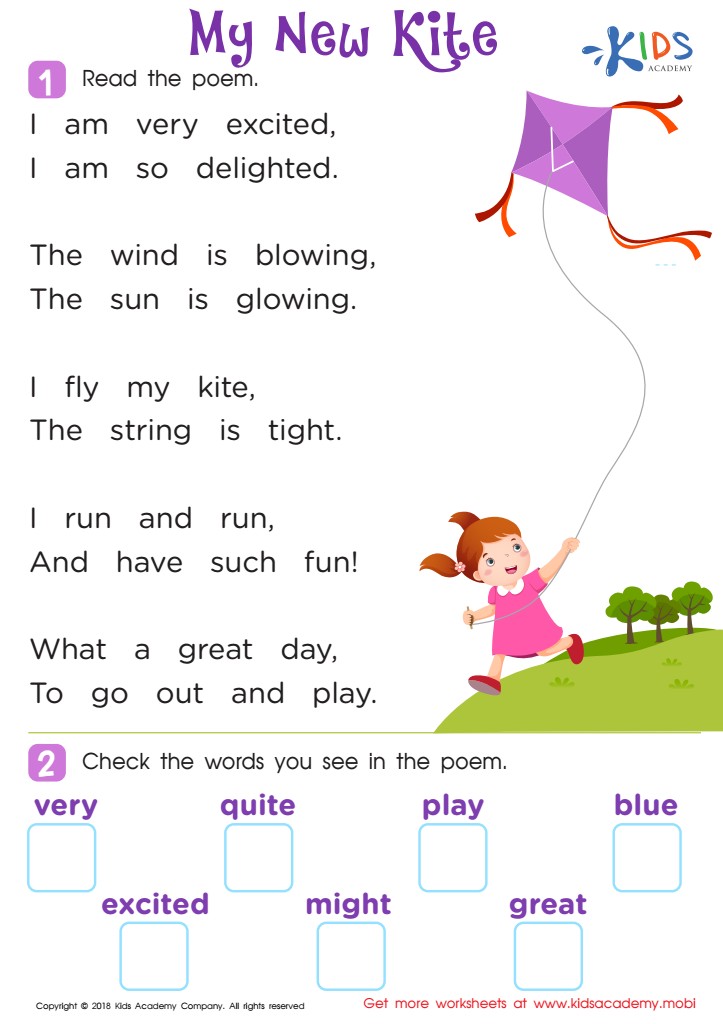

Poem: My New Kite Worksheet
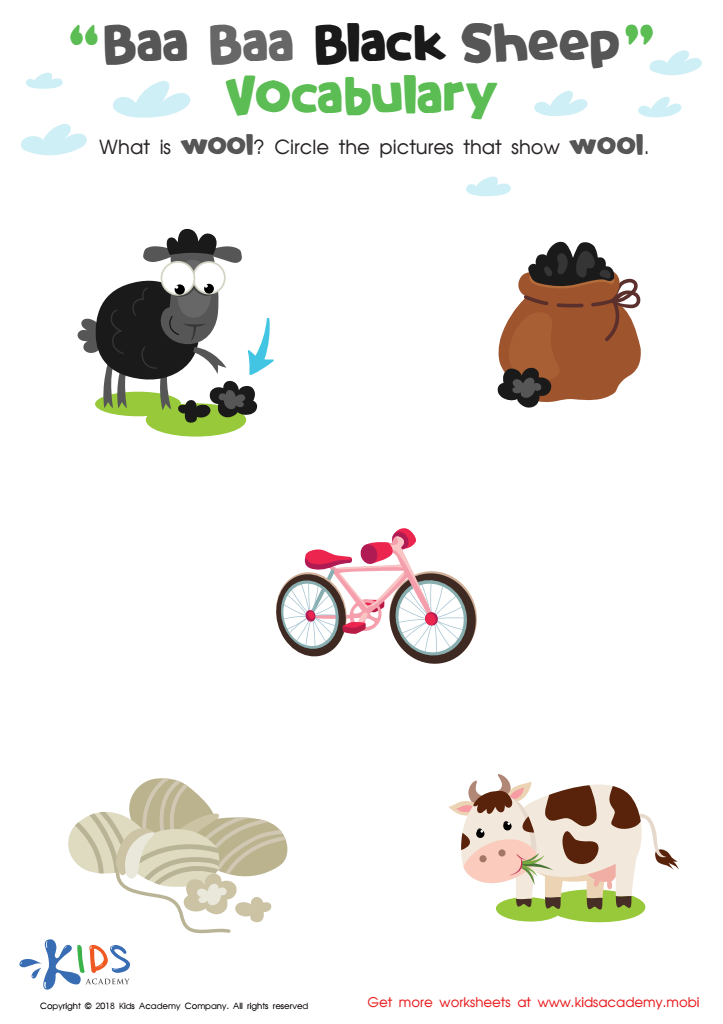

Baa Baa Black Sheep: Vocabulary Worksheet
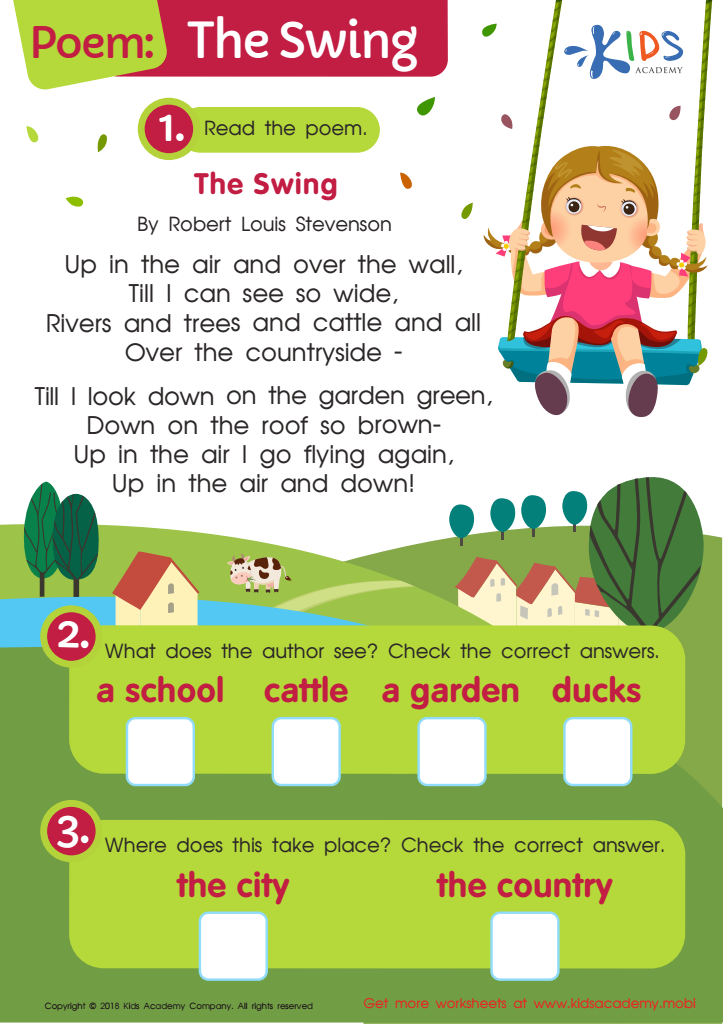

Poem: The Swing Worksheet
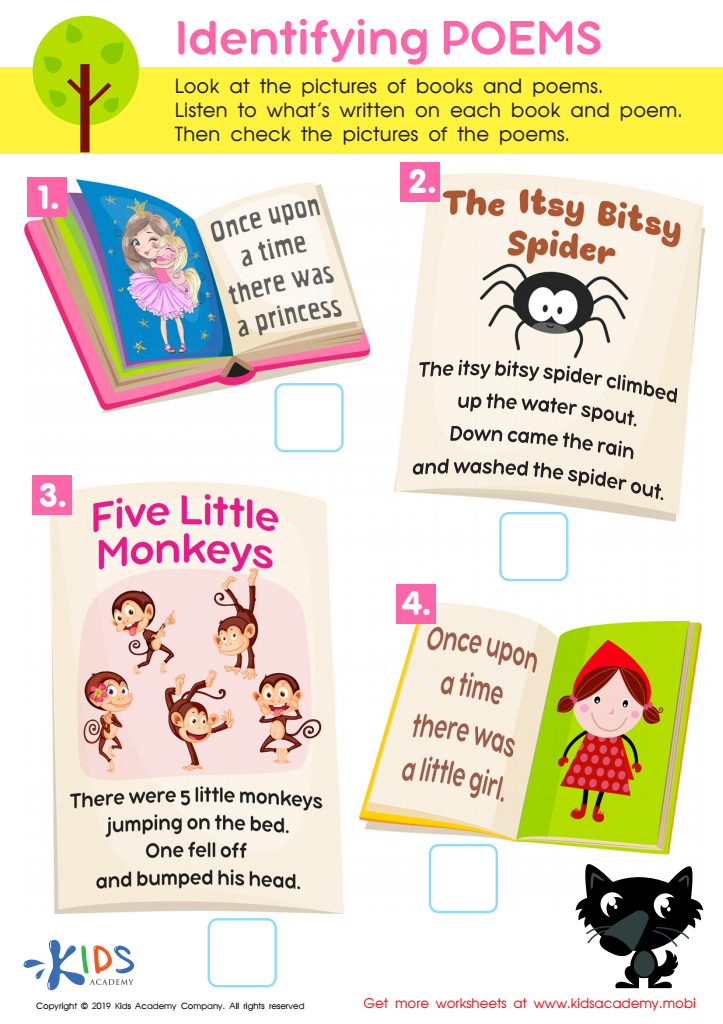

Identifying Poems Worksheet
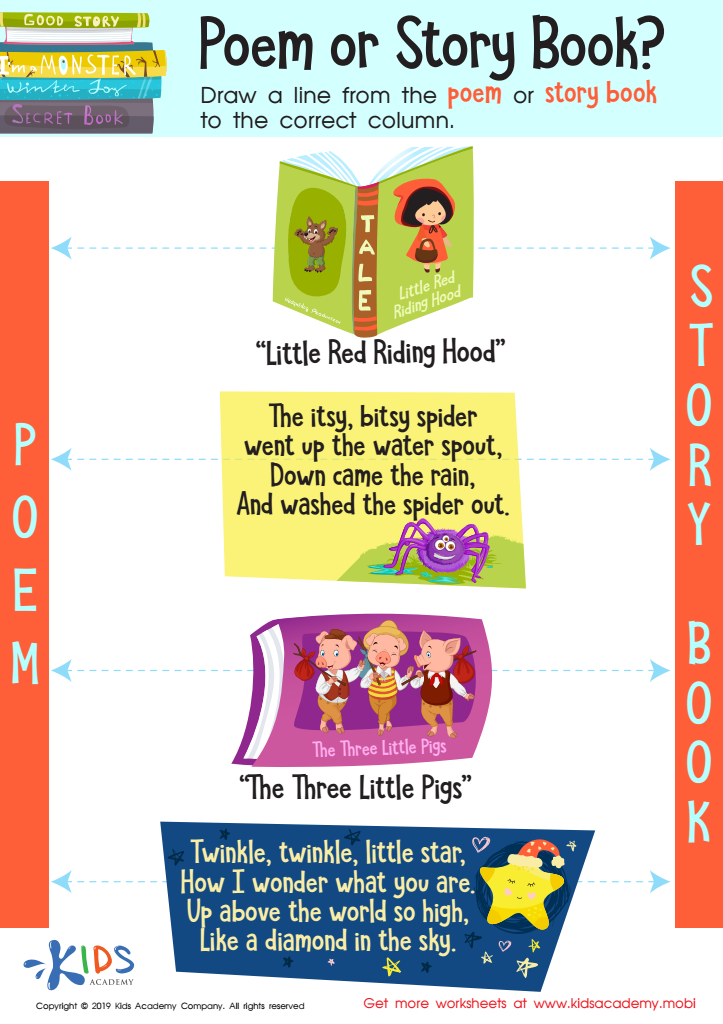

Poem or Story Book? Worksheet
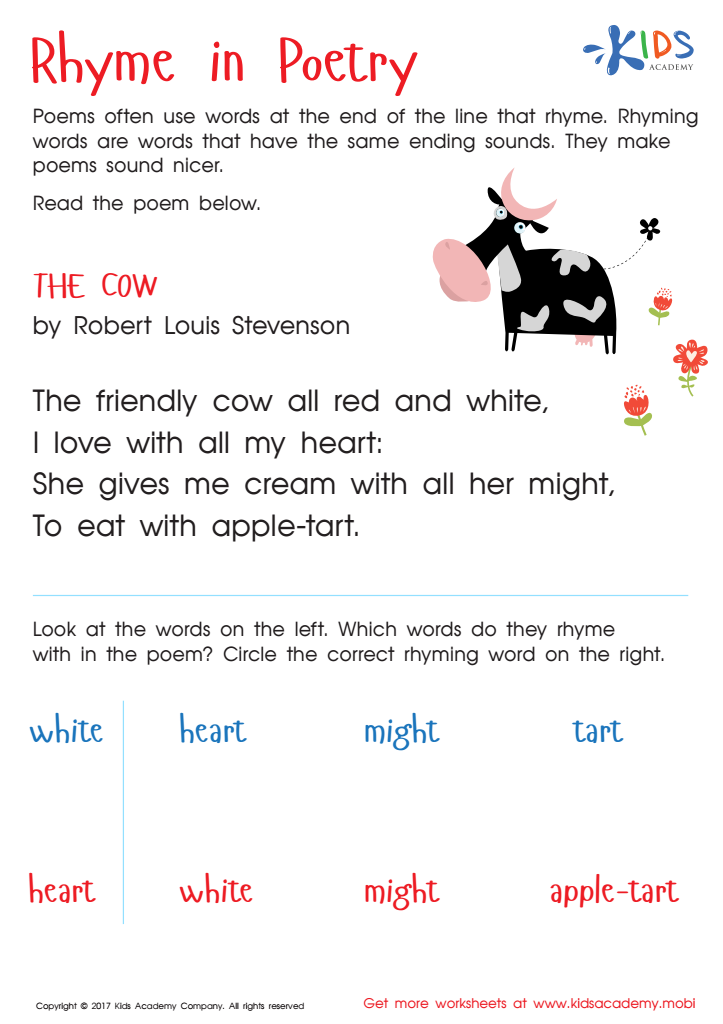

Rhyme In Poetry Worksheet
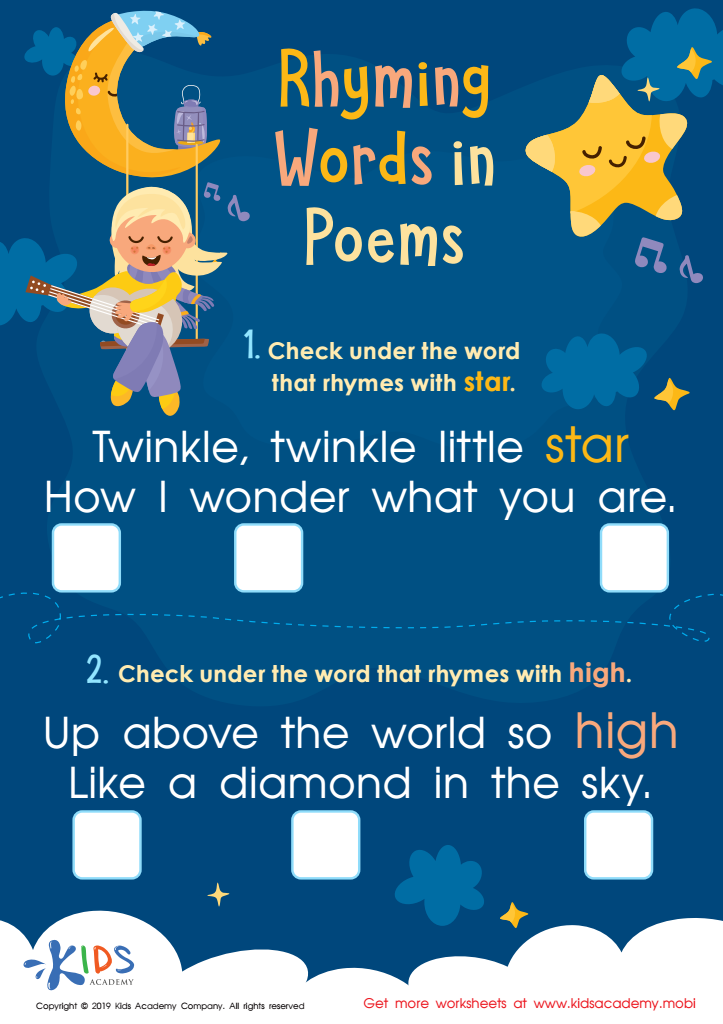

Rhyming Words in Poems Worksheet
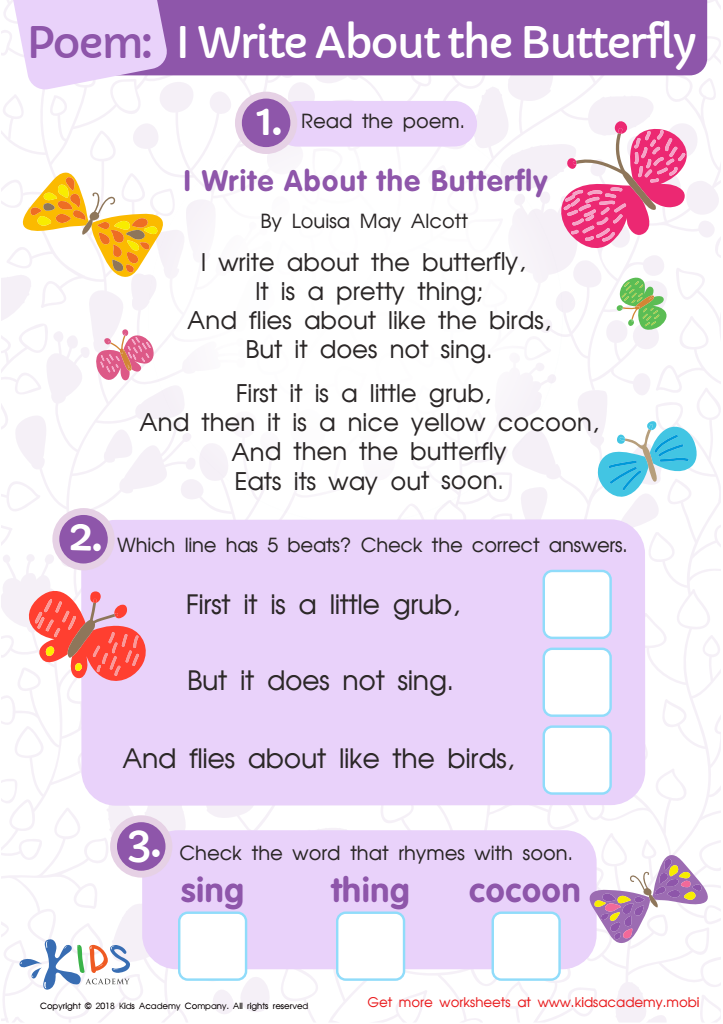

Poem: I Write About The Butterfly Worksheet
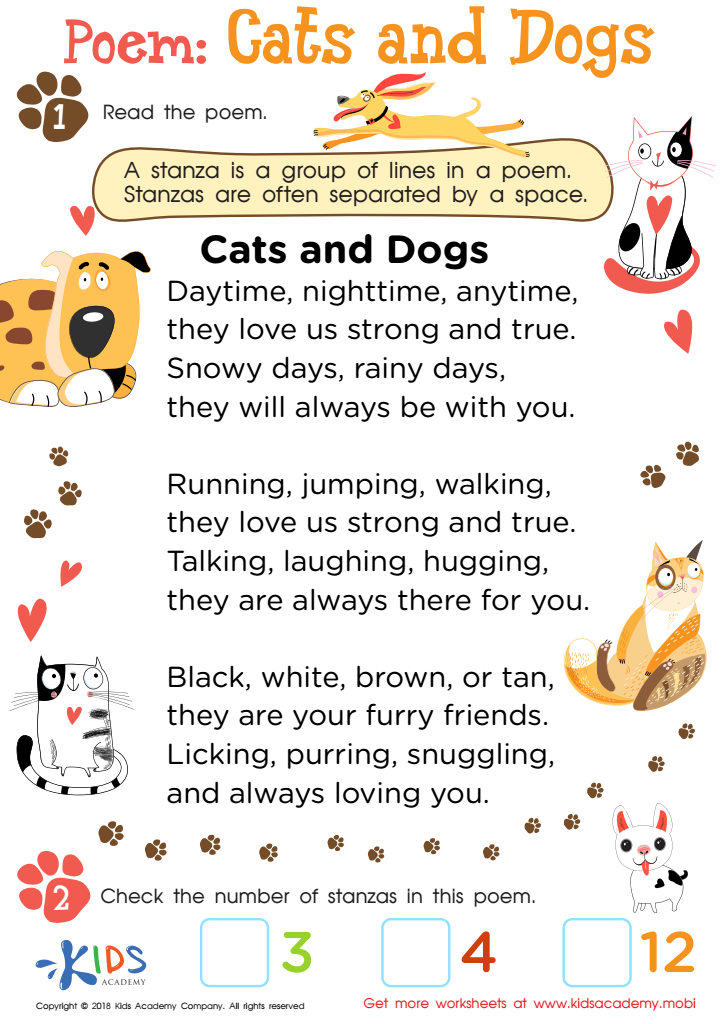

Poem: Cats and Dogs Worksheet
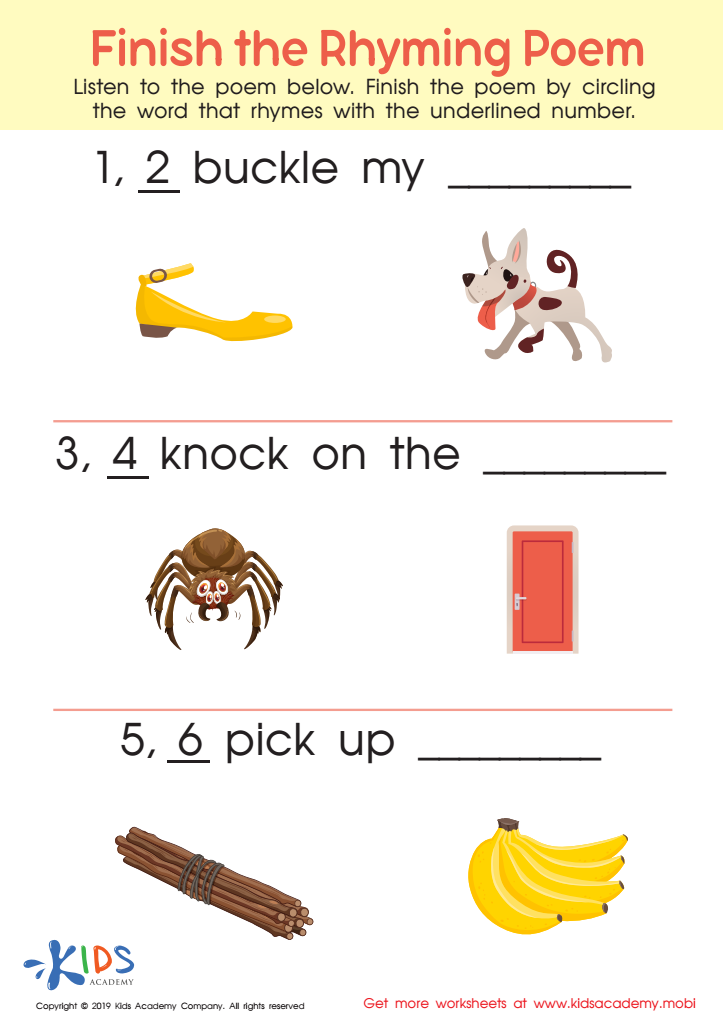

Finish Rhyming Poem Worksheet
Parents and teachers should prioritize activities involving normal songs and poems for children aged 4-9 because they play a crucial role in early literacy and cognitive development. Engaging with songs and poems introduces young learners to rhythm, rhyme, and phonetic patterns, which are foundational elements of reading. These activities can enhance vocabulary, improve comprehension skills, and foster a love for language.
Moreover, normal songs and poems encourage creativity and self-expression. By participating in these activities, children develop their imagination and storytelling abilities, leading to enhanced communication skills. The repetitive nature of songs and rhymes helps embed important concepts in a child's memory, making learning more effective.
Additionally, such activities promote social skills and collaboration. Singing or reciting poems in a group setting fosters teamwork and encourages emotional bonds among peers. They also provide a platform for teaching important life lessons and cultural values in a fun and engaging manner.
Ultimately, incorporating normal songs and poems into the curriculum enriches the educational experience. It not only aids academic growth but also nurtures emotional and social development, making it vital for parents and teachers to value these innovative, engaging activities.

 Assign to My Students
Assign to My Students


